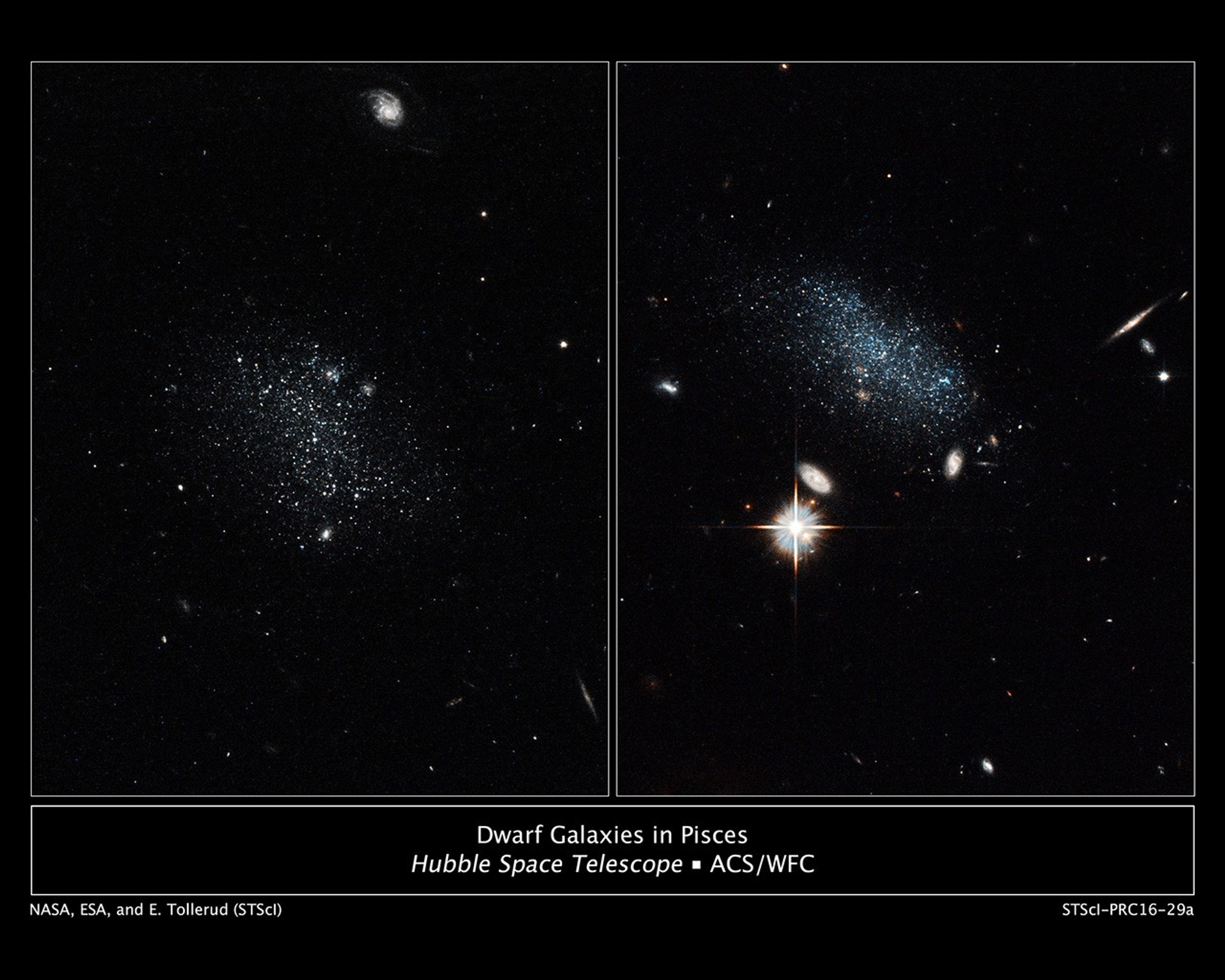1 min read
Dwarf Galaxy Pisces B

About the Object
- R.A. PositionR.A. PositionRight ascension – analogous to longitude – is one component of an object's position.01h 19m 11.7s
- Dec. PositionDec. PositionDeclination – analogous to latitude – is one component of an object's position.+11° 07' 18.22"
- ConstellationConstellationOne of 88 recognized regions of the celestial sphere in which the object appears.Pisces
- DistanceDistanceThe physical distance from Earth to the astronomical object. Distances within our solar system are usually measured in Astronomical Units (AU). Distances between stars are usually measured in light-years. Interstellar distances can also be measured in parsecs.29.0 million light-years
About the Data
- Data DescriptionData DescriptionProposal: A description of the observations, their scientific justification, and the links to the data available in the science archive.
Science Team: The astronomers who planned the observations and analyzed the data. "PI" refers to the Principal Investigator.Data were provided by HST proposal 13745: E. Tollerud (STScI), M. Geha (Yale University), J. Grcevich (AMNH), M. Putman (Columbia University), and D. Stern (JPL). The science team also includes D. Weisz (University of Washington) and A. Dolphin (Raytheon). - InstrumentInstrumentThe science instrument used to produce the data.HST>ACS/WFC
- Exposure DatesExposure DatesThe date(s) that the telescope made its observations and the total exposure time.November 8, 2014, Exposure Time: 2,092 seconds
- FiltersFiltersThe camera filters that were used in the science observations.F606W (wide V), F814W (I)
- Object NameObject NameA name or catalog number that astronomers use to identify an astronomical object.Pisces B
- Object DescriptionObject DescriptionThe type of astronomical object.Dwarf galaxy
- Release DateAugust 11, 2016
- Science ReleaseHubble Uncovers a Galaxy Pair Coming in from the Wilderness
- Credit

This image is a composite of separate exposures acquired by the ACS/WFC instrument. Two filters were used to sample different wavelength bands. The color results from assigning different hues (colors) to each monochromatic (grayscale) image associated with an individual filter. In this case, the assigned colors are: Cyan-blue: F606W (wide V) Red-orange: F814W (I)

Related Images & Videos

Dwarf Galaxies in Pisces
NASA's Hubble Space Telescope has captured the glow of new stars in these small, ancient galaxies. Pisces A is on the left and Pisces B is on the right. Astronomers estimate that less than 100 million years ago both galaxies doubled their star-formation rate. An analysis of the...
Share
Details
Claire Andreoli
NASA’s Goddard Space Flight Center
Greenbelt, Maryland
claire.andreoli@nasa.gov

































